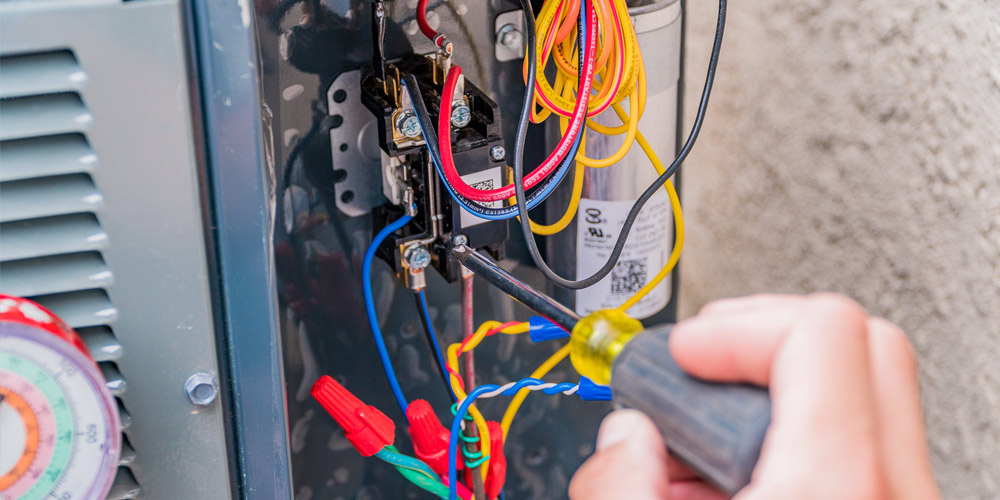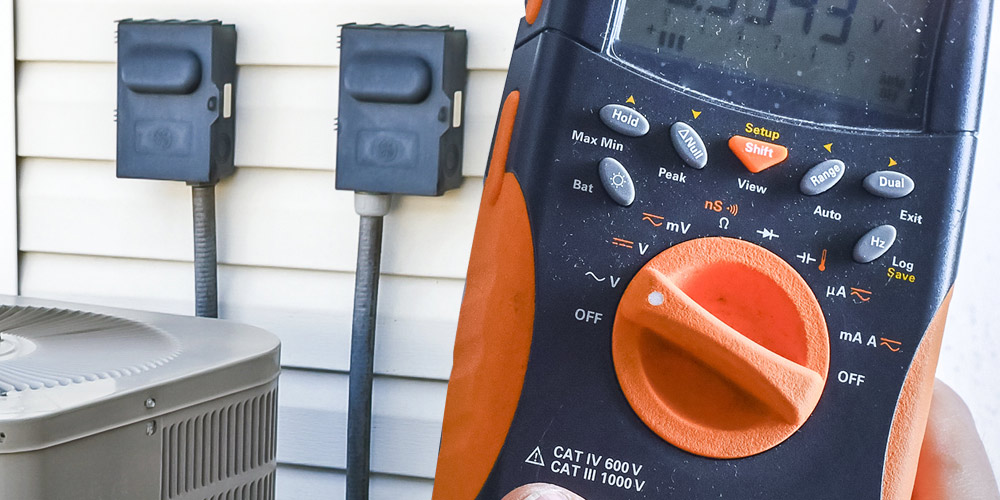A blown AC fuse may be a worrisome issue at first, but luckily, it is something you or an AC repair technician can diagnose and fix quickly. This post will guide you through the steps of checking for a blown AC fuse. But before we dive into the matter, let us first learn how a fuse works.

How Does an AC Fuse Work?
A fuse is simply a short wire of a specific diameter and material composition designed to handle a particular amount of current based on AC’s maximum amperage rating. If more current than the rated amperage tries to reach the AC, the fuse blows (the filament melts) to protect the condenser. Manufacturers often mount the fuse wire inside a small glass/ceramic tube with metallic end caps. The glass tube serves two purposes:- It forms a physical guard around the filament to prevent damage or injury when the fuse blows.
- It allows you to visually assess whether the fuse has blown.
Ways to Determine if Your AC Fuse is Blown
If your outdoor AC unit is not turning on and there is a slight hum near the unit (but no cold air), chances are the AC fuse has gone bad. The hum originates from the furnace/thermostat continually sending signals that your home needs cold air. You can check for a bad fuse yourself if you are familiar with the basic electrical system of the AC. But if you are not sure about what you need to do, call for a professional air conditioning repair service, instead. The best method to check for a blown fuse is using a voltmeter. Follow the steps below:- Locate the disconnect (the grey box mounted near the outdoor condenser) and lift its cover.
- Expose the wiring in the disconnect by popping out or unscrewing the inner cover protecting the wring inside the disconnect.
- Locate the incoming wires (labeled the “line”) and the outgoing wires (labeled the “load”). Note that both wires carry 110 volts, so tread carefully.
- Set your voltmeter to the voltage (V) setting and ensure the display indicates “0” volts. Some models indicate infinity.
- Place the positive (+) and negative (-) leads on the lugs joining the two line wires. Leads are the voltmeter’s wires, while lugs are the screws that hold the disconnect wires down.
- A voltmeter reading between 220 and 240V signals that there is power coming into the disconnect to the fuses. If the voltmeter does not read anything, the fuse is not the culprit. It may be time to schedule AC repair with a trusted HVAC contractor.
- If there is the voltage on the “line” side, test for voltage on the “load” side of the fuses by placing the meter’s leads on the load wire lugs. If you read voltage on this side(220-240V), this means the current is flowing through the fuse. If you get a zero-voltage reading on the load, this means your fuse is blown.
Alternative Method for Checking Blown AC Fuse
You can still have another way to check whether your AC has a blown fuse without using a voltmeter. Check the voltage rating of your AC fuse and buy a similar fuse at a local retail store. Install the new fuses to test if the old fuses were the problem. If the AC works, this means its fuse had blown. If the AC remains non-functional, better to look for AC repair near me and get in touch with a trusted AC repair service technician immediately.
General Precautions
Observe the following safety tips when checking for a blown AC fuse yourself:- Make sure your hands, feet, and floor are dry to eliminate electrical shock hazards.
- Turn the power off when removing or installing an AC fuse
- DO NOT substitute an AC fuse with a foil or another object; otherwise, you increase the risk of electrocution and fire.
- Take a photograph of the disconnect box when you open it. You may need the picture to verify that every component is in the right position while closing the disconnect box.
- Bad wiring
- Dirty filter
- Too low or too high refrigerant level
- Bad capacitor
- Faulty compressor










